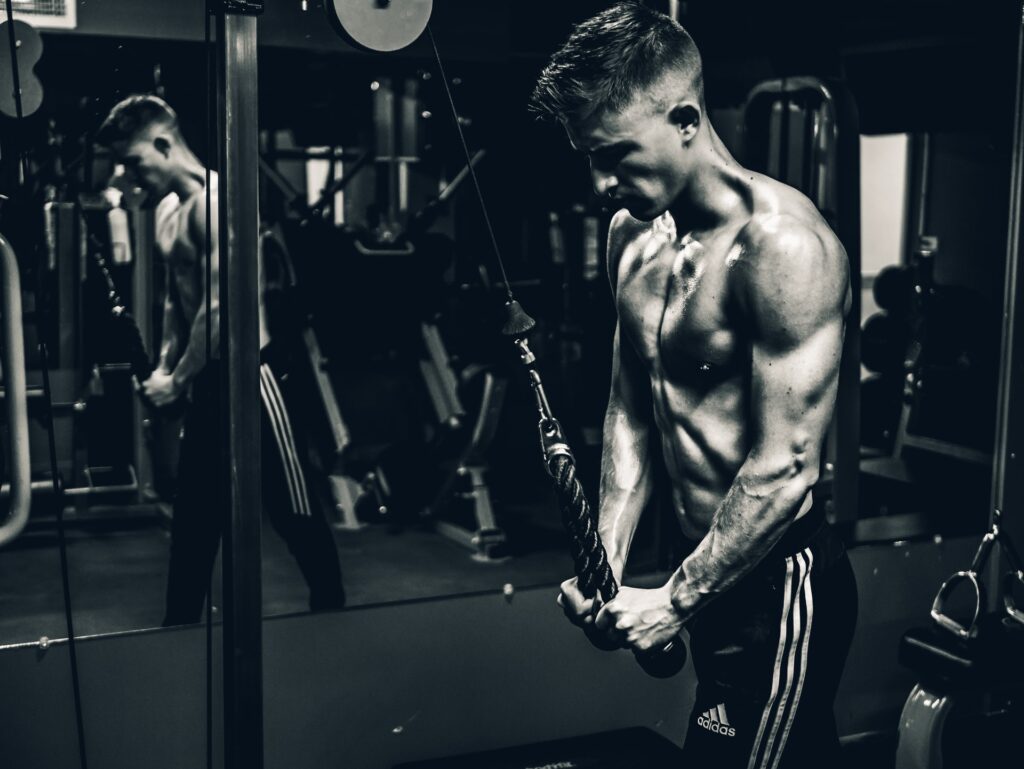Strength training and powerlifting are popular forms of exercise that focus on building muscle and developing strength. While many lifters rely on traditional exercises such as squats, deadlifts, and bench press to achieve their goals, incorporating exercise variation into a training program can be an effective way to challenge the muscles in new ways and promote muscle growth.
In this article, we’ll explore the concept of exercise variation and how it can be used to build muscle and improve strength. We’ll discuss the benefits of exercise variation, different types of exercises that can be used, and how to incorporate them into a training program. Whether you’re a beginner or an experienced lifter, understanding the importance of exercise variation can help you reach your fitness goals and take your strength training to the next level. So let’s dive in and explore how to build muscle with exercise variation!
Table of Contents
What is exercise variation?
Exercise variation is the practice of using a variety of exercises to challenge the muscles in different ways and promote muscle growth. In powerlifting and bodybuilding, exercise variation can be a useful tool for improving strength, building muscle, and preventing plateaus.
There are several types of exercise variation that can be used, including:
- Variations of the main lifts: In powerlifting, the squat, bench press, and deadlift are the main lifts that are typically trained to improve strength. Variations of these lifts, such as front squats, close-grip bench press, and deficit deadlifts, can be used to challenge the muscles in different ways and improve weaknesses in the main lifts.
- Assistance exercises: Assistance exercises are exercises that target specific muscle groups and are used to improve weaknesses in the main lifts. For example, in bodybuilding, assistance exercises such as bicep curls, tricep extensions, and lateral raises can be used to target specific muscle groups and promote muscle growth.
To practically apply exercise variation, it’s important to first identify your goals and weaknesses. For powerlifting, this may involve identifying weaknesses in the main lifts and selecting variations or assistance exercises to address them. For bodybuilding, this may involve selecting exercises to target specific muscle groups that are lagging behind.
Once you’ve identified your goals and weaknesses, you can begin to incorporate exercise variation into your training program. This may involve rotating between different variations of the main lifts, incorporating assistance exercises to target specific weaknesses, or adding in isolation exercises to target specific muscle groups.
It’s important to note that exercise variation should be used in moderation and should not replace the main lifts or compound exercises. These exercises should still make up the foundation of your training program, with exercise variation used to supplement and support your goals.
In summary, exercise variation is a valuable tool for improving strength and building muscle in powerlifting and bodybuilding. By incorporating a variety of exercises into your training program and targeting specific weaknesses and muscle groups, you can take your training to the next level and achieve your fitness goals.
How to build muscle fast with exercise variation?
Exercise variation allows you to carry on making progress by not letting your body adapt to the same stimuli. By constantly changing the movements, your body never gets truly adapted to the environment and is forced to grow bigger, stronger and more resistant to the influence of the world around you. The exercises performed during the workout should be changed on a regular basis to prevent stagnation and to allow for constant athletic development but one can not simply do so randomly.
Build big muscle by rotating exercises the right way
Choosing the right movement patterns can be quite a task and if not done properly may hinder rather than optimise strength gains. That’s one of the reasons you need a good coach. A coach will not only direct you and help you achieve your goal faster but also help you to choose the right exercises and ensure that they match your goals and needs. Exercise selection requires comprehensive knowledge about biomechanics, training parameters, sport science, etc. In order to correctly program a training cycle, the coach needs to know what are the athlete’s goals, needs, how do they react to certain exercises, rep ranges and so on, however, the most important thing about rotating exercises is that they must complement each other.
Think of it as a never-ending cycle of balancing on the edge. If you lean too far left, you will fall over and the same goes for the other side. You simply have to be balanced. For instance, training at extremely long muscle lengths may help to increase muscle flexibility and shock the muscle tissue but do that for too long and it will hurt your performance as it won’t be specific to your sports’ demands anymore. Therefore, the exercises should be changed from time to time and every time you force your body into a cycle of rapid muscle mass or strength gaining, you need to be aware that it’s not going to last forever.
Let me bring a simple example. While training with Josh Bryant, Josh used to program a block of Floor Flyes followed by a block of Cable Flyes. These two movements are kind of opposite to each other. Floor Flyes allow you to use heavier weights as you’re training in the shorter range of motion while Cable Flyes force you to use lighter weights and go through a longer ROM. It’s the same story with DB Flyes and Pec Deck. Classic DB Flyes overload your pecs at a stretched position while Pec Deck does so in the shortened position. These movements complement each other and if you look closely at their mechanics it becomes obvious.
The story gets a bit more complicated when we are to deal with the big compound lifts though. First of all the exercises should work synergistically, second of all they should be specific to desired goals and finally, they also have to trigger neurological adaptations that allow you to lift more and more weight in the subsequent training blocks. If you take a closer look at a squatting microcycle and you are to program Low Bar Squats, Banded Low Bar Squats and Box Squats, it’s not that obvious anymore. Low Bars are the competition movement, Banded Squats will teach you how to push all the way up as fast as you can and Box Squats will take away the stretch reflex making it harder to explode up from the bottom. Which exercise would you start off and which would you finish with? Well, that would depend on your goals (if it’s powerlifting, you are probably aiming for a big competition squat, not banded squat) and your needs (what part of the movement do you need to strengthen at this moment to allow your body to lift the most weight). The trick is that different athletes have different goals, needs and might even react differently to the same exercises.
Muscle training tips
The 3 most important things you have to look at are:
- Think of your weakest link and pick an exercise that aims to strengthen it
- Dismantle the exercise and think of what qualities does it actually develop
- Look back at what have you been doing for the past couple of weeks and think of what you might need in the future
Assuming you know where do you want to end up, all of this information put together will give you a picture of where you’re at and what do you need to be doing. Remember that picking the right exercises for yourself is not an easy task as it requires essential knowledge, skills and intuition therefore it’s good to have a nice coach around you but regardless if you have a coach or not, the exercises shall be chosen wisely, therefore, ensure that you remember those 3 simple tips I just listed above.
This article is far from being a comprehensive guide to exercise rotation thus treat it only as an idea to remind you of the importance of the specificity principle and remember that randomly changing exercises just like bodybuilders do will get you big muscles but if those movements are not related to each other in some sort of way, those muscles will likely be useless in terms of sports performance.
I’d also like to thank Andrzej “Wodyn” Roszkowski and Ryan Kennelly for reminding me of that and pointing out clear instructions on how to correctly pick from a wide range of movements. Read this article if you want to read what I learnt from Ryan Kennelly.




